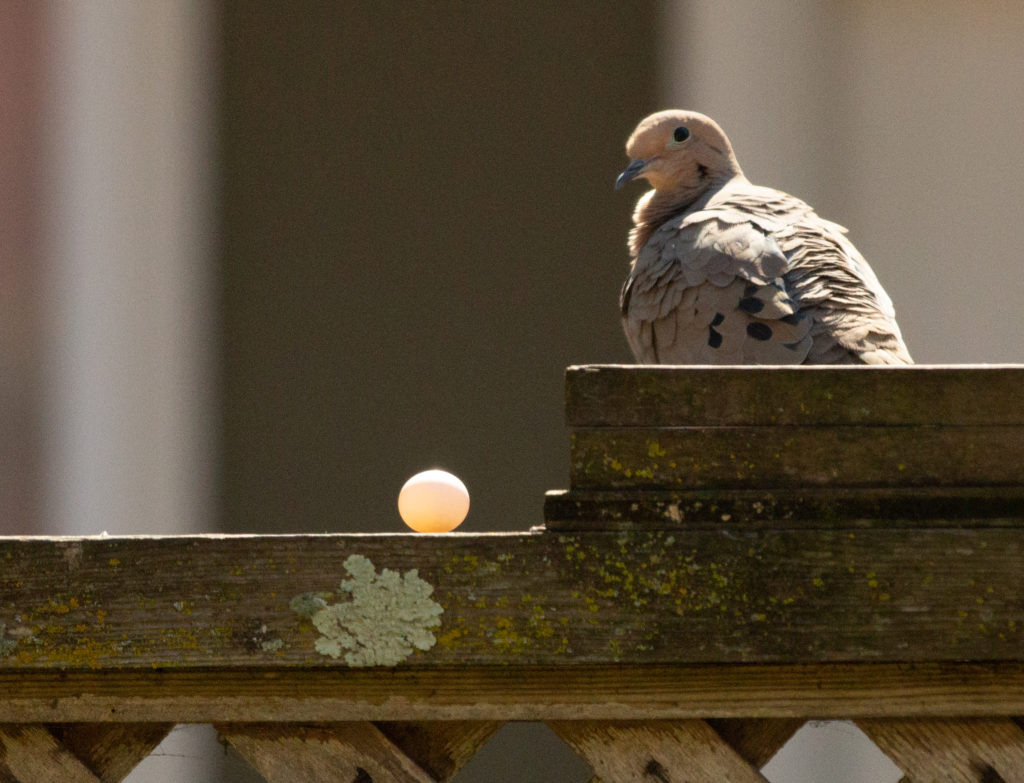
There’s lots of evidence that mourning doves know what they’re doing when they try to reproduce. The Cornell Ornithology Lab says the worldwide breeding population is 120 million. Most of those birds, about 100 million, spend at least part of the year in the United States (where a vast number, perhaps 20 million, are shot by hunters each year). A smaller number — we’ve seen as many as eight at a time — spend at least part of the year in our backyard.
That having been said, as a non-expert, I’ve seen mourning doves do some things as part of their apparent nesting behavior that makes it look like this species doesn’t really have its own future in mind. For instance, we’ve seen a pair of doves that looked like they were determined to build a nest on a telephone line; at least that’s how I interpreted them trying to get twigs and strands of grass to stay in place on a piece of cable about as big around as your pointing finger.
And then there’s the example above. There has been some obviously amorous dove-on-dove activity in the backyard for the last week or so. This morning, Kate saw a pair nestled together on the side fence in the backyard. One of them, we’ll guess it’s a female, started to waggle her tail back and forth. And a few minutes later, we spotted it: an egg laid right out in the open on the two-by-four that serves as the fence’s top rail. The bird shown in the picture is the one we were guessing was a male; the female had sidled off down the fence a ways. They just kind of left it sitting there in the open, and then flew off when I was in the yard.
I figured it was only a matter of time before a) they came back to incubate the egg on the very exposed non-nest or b) a crow, jay or squirrel realized that a delicacy awaited and grabbed the egg. I went out to get more of a close-up before nature took its course.

A while later, a breeze came up and blew the egg a couple of feet along the top of the fence. Then the crow showed up. One pecked at it, then left it alone, which made me wonder if the egg had already been hollowed out. But it was still intact. Immediately after my inspection, the crow came back, speared the egg with its beak, and carried it over to a neighbor’s roof, where it ate the egg whole.
